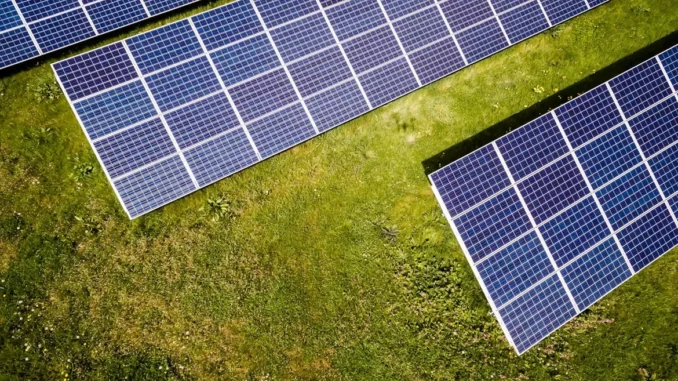
Summary
India’s Solar Ambitions Hinge on Overcoming Energy Intermittency
In an insightful discussion with Aditya Verma, a seasoned consultant in renewable energy, it becomes evident that India’s solar power future depends on innovative solutions to tackle energy intermittency. With a target of 500 GW renewable capacity by 2030, India needs to address gaps in solar energy production. “Solar energy is undoubtedly the future,” Verma asserts, highlighting the critical role of energy storage systems and smart grids in stabilising solar supply.
Main Article
The Challenges of Solar Intermittency
Aditya Verma, an expert with over ten years of experience in the solar sector, speaks enthusiastically about the challenges and potential of solar energy systems. During our meeting in Bengaluru, Verma emphasised the issue of intermittency, which poses significant hurdles. “The primary issue,” Verma explained, “is solar power’s reliance on sunlight, which can be inconsistent due to weather and time of day.” In India, the monsoon season can severely impact solar output, affecting energy reliability.
To meet its ambitious goal of 500 GW of renewable energy by 2030, India must find reliable solutions. Verma warned, “Without overcoming this hurdle, we risk falling back on coal and other fossil fuels during shortages, which is counterproductive to our climate goals.”
Energy Storage as a Solution
Energy storage systems (ESS) are crucial in mitigating the fluctuations of solar power. Verma highlighted the role of lithium-ion batteries in transforming the landscape. “Their efficiency and dropping costs have made them more accessible for large-scale projects and even individual households,” he noted. States like Andhra Pradesh are already pioneering significant battery storage projects to stabilise energy supply.
However, scaling these solutions remains a challenge. “The cost of storage is still a barrier,” Verma conceded, “and reliance on lithium imports poses sustainability concerns.” Nevertheless, he remains optimistic about emerging technologies such as flow batteries and solid-state batteries, which promise longer storage times and enhanced safety.
Integration Through Smart Grids
Verma also emphasised the importance of smart grids and microgrids in integrating solar energy into India’s power infrastructure. “Smart grids are essential for managing energy flow, balancing supply and demand in real-time,” he explained. In remote areas, solar-powered microgrids offer a reliable alternative, reducing dependency on diesel generators. Ladakh serves as a successful example, where microgrids are powering remote villages.
Artificial intelligence (AI) is revolutionising solar forecasting, improving prediction accuracy and enabling more efficient energy management. “AI is revolutionising how we predict solar energy generation,” Verma said, noting that India is beginning to embrace this technology, with promising results already seen in the U.S.
The Rise of Hybrid Systems and Technological Innovations
Hybrid energy systems, combining solar with other renewable sources like wind or hydropower, offer a balanced energy flow. “These systems compensate for each source’s fluctuations,” Verma explained. Gujarat is pioneering hybrid solar-wind farms, showcasing their potential to enhance efficiency and reduce fossil fuel reliance.
Technological innovations like bifacial solar panels and perovskite cells are also gaining traction. “Bifacial panels can capture sunlight from both sides, increasing energy production,” Verma stated, while perovskite cells provide higher efficiency and are well-suited to India’s climate. These advancements are critical for projects like the Rewa Solar Park, pushing the boundaries of solar capabilities.
Detailed Analysis
India’s solar power ambitions are a microcosm of the broader global shift towards renewable energy. The country’s target of 500 GW by 2030 reflects both its commitment to reducing carbon emissions and the practical challenges of modernising its energy infrastructure. The intermittency of solar power underscores a universal issue faced by renewable energy sources: the need for reliable storage solutions and smart grid technologies to ensure consistent energy supply.
Lithium-ion batteries have become central to this endeavour, driving down costs and increasing efficiency. However, the reliance on imported lithium highlights potential vulnerabilities in supply chains, urging the exploration of alternative technologies such as flow and solid-state batteries. These innovations promise not only to extend storage capabilities but also to enhance safety and sustainability.
Smart grids and microgrids represent a paradigm shift in energy management, particularly in a diverse and geographically vast country like India. As AI continues to advance, its role in solar forecasting could significantly optimise energy distribution, reducing reliance on fossil fuels and bolstering the transition to a more sustainable energy future.
Further Development
As India progresses towards its renewable energy goals, ongoing developments in energy storage technology and grid integration will be pivotal. The government’s policy support, including initiatives like the PM-KUSUM scheme, plays a crucial role in fostering innovation and adoption. Future coverage will explore the impact of these policies on solar energy projects and their contribution to meeting climate objectives.
The evolution of hybrid energy systems and cutting-edge solar technologies will be closely monitored, offering insights into their potential to revolutionise energy landscapes. Readers are invited to stay engaged with our coverage as we continue to explore these critical developments in India’s journey towards a sustainable energy future.

